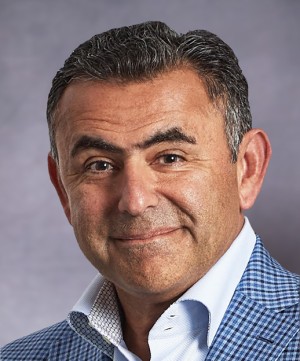- Video Library
- Kurt Azarbarzin Presents EndoQuest Robotics at LSI USA ‘23
Kurt Azarbarzin Presents EndoQuest Robotics at LSI USA ‘23

Kurt Azarbarzin
Kurt Azarbarzin is a 39-year medtech industry veteran, having led the development of over 90 new products representing over $910 million of annual sales at companies including U.S. Surgical, Tyco Healthcare (now Medtronic), Spine Wave, Respimetrix, SurgiQuest, Verb Surgical, and J&J. He has experience in surgical, robotic, cardiovascular, interventional, orthopedic and urological markets. Kurt founded SurgiQuest in 2005 and sold it to CONMED, and the company's lead technology AirSeal became the standard of care for advanced laparoscopic and robotic surgery. He then became CEO of Verb Surgical (a joint venture between Google and J&J) consisting of over 550 employees, that was acquired by J&J in January 2020. After that, Kurt became and is currently the CEO of EndoQuest Robotics, which is developing the first endoluminal robotic surgical platform in the world, designed to enable scar-free surgery through the body's natural orifices.
Kurt Azarbarzin
Kurt Azarbarzin is a 39-year medtech industry veteran, having led the development of over 90 new products representing over $910 million of annual sales at companies including U.S. Surgical, Tyco Healthcare (now Medtronic), Spine Wave, Respimetrix, SurgiQuest, Verb Surgical, and J&J. He has experience in surgical, robotic, cardiovascular, interventional, orthopedic and urological markets. Kurt founded SurgiQuest in 2005 and sold it to CONMED, and the company's lead technology AirSeal became the standard of care for advanced laparoscopic and robotic surgery. He then became CEO of Verb Surgical (a joint venture between Google and J&J) consisting of over 550 employees, that was acquired by J&J in January 2020. After that, Kurt became and is currently the CEO of EndoQuest Robotics, which is developing the first endoluminal robotic surgical platform in the world, designed to enable scar-free surgery through the body's natural orifices.

17011 Beach Blvd, Suite 500 Huntington Beach, CA 92647
714-847-3540© 2025 Life Science Intelligence, Inc., All Rights Reserved. | Privacy Policy







